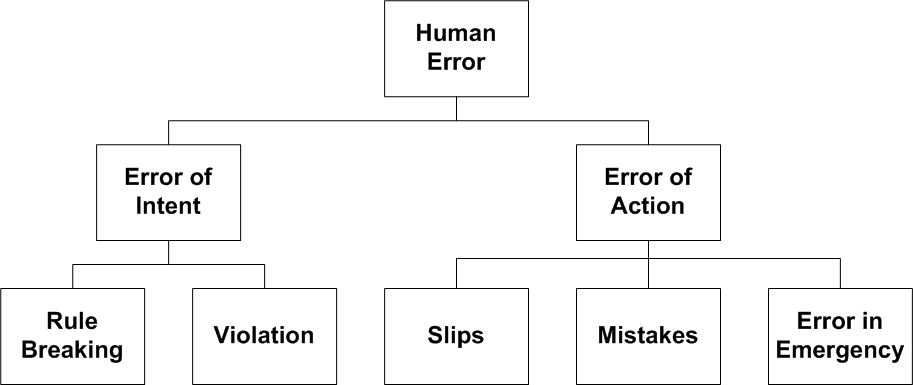Human Error Modeling — THERP
Human performance is inherently unpredictable. Human beings are, after all, human beings — not machines. However, quantitative models, such as those used in Probabilistic Risk Analysis (PRA), do require that we be able to predict human behavior as best we can. We need ways of categorizing human error, and of predicting the frequency with which such errors occur.
One such technique is known as THERP (Technique for Human Error Rate Prediction). Because the method uses Boolean logic to model and predict human error rates it can be integrated into PRA assessments — particularly when either Fault or Event Tree analysis are being used. A THERP analysis is most effective when the tasks being modeled are routine activities, and when the persons involved are not under stress.
Slips and Mistakes
Before categorizing human error, it is useful to distinguish between slips and mistakes.
Slips usually occur during normal, routine, non-stress situations. For example, an operator may routinely take two samples from a certain section of the plant every shift, and he may have successfully performed this action hundreds of times. Then, on one occasion, he slips up and inadvertently switches the samples. More training in not a solution to errors that are slips — the person involved knew just what to do, he or she just “slipped up”.
Mistakes (sometimes referred to as a cognitive error) occur when a person acts on an incorrect train of reasoning. They often occur because the person was not properly informed as to what to do, or how to do it. Hence, a mistake is defined as, “a human error that is a failure in diagnosis, decision-making, or planning.”
Modeling Human Error
Keep reading with a 7-day free trial
Subscribe to Net Zero by 2050 to keep reading this post and get 7 days of free access to the full post archives.



